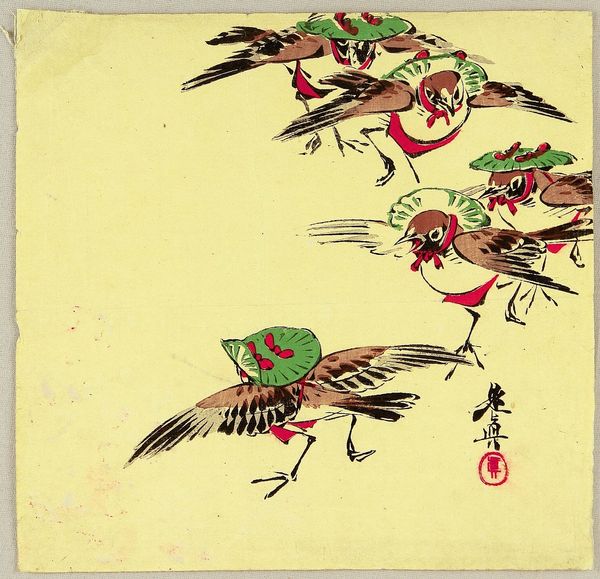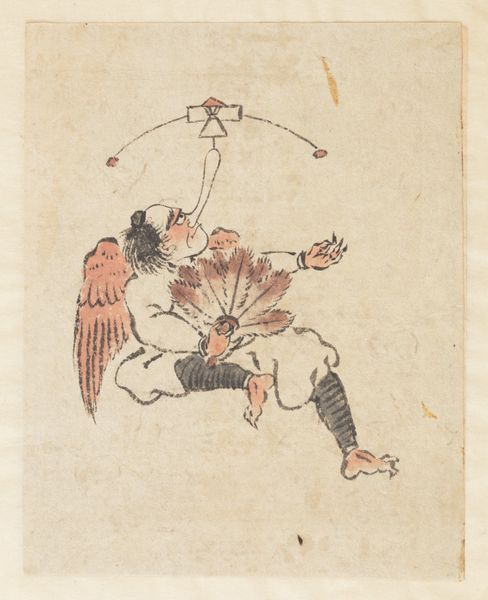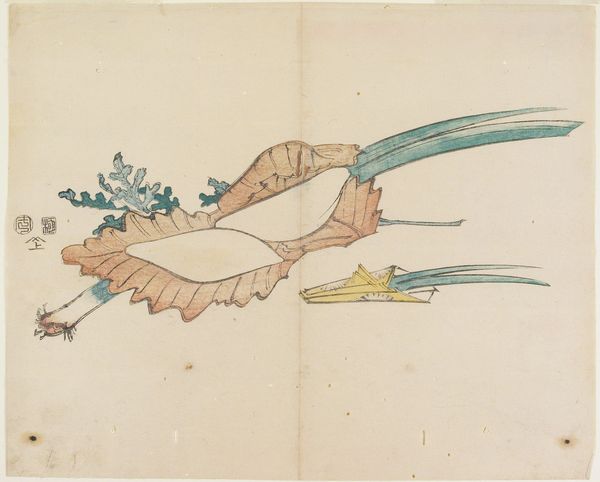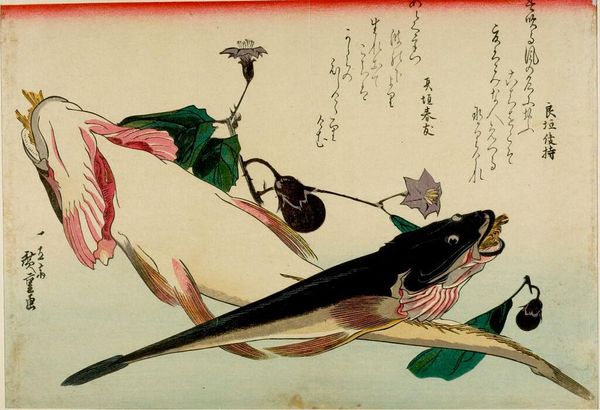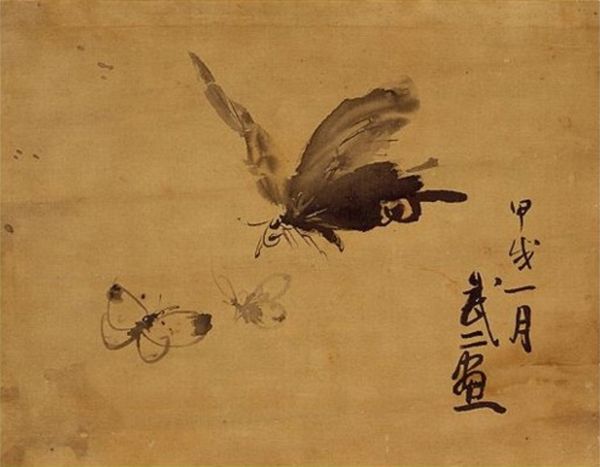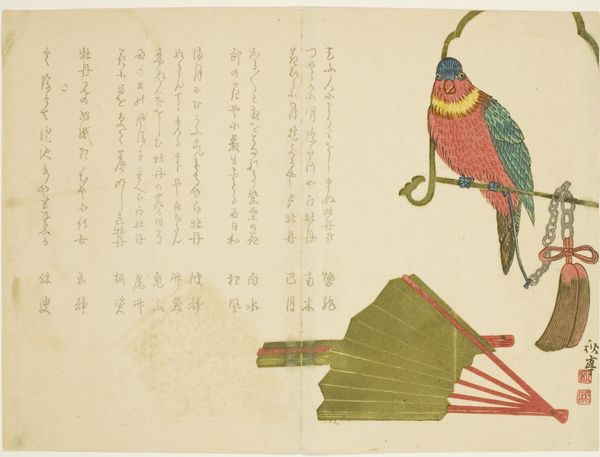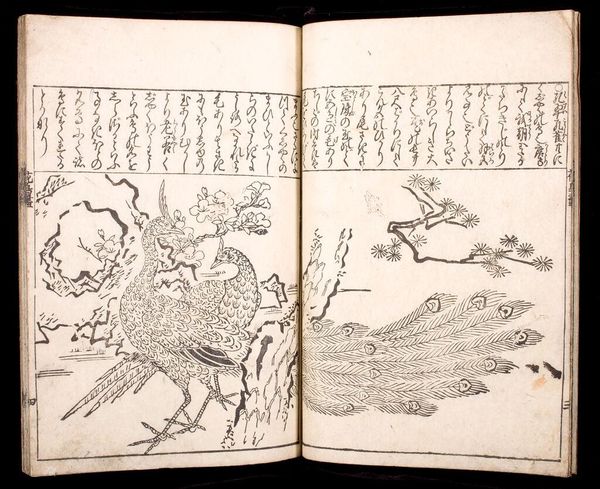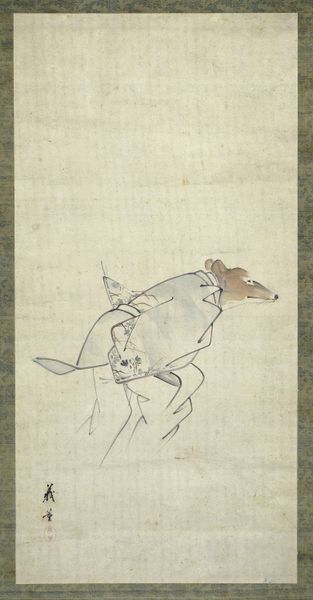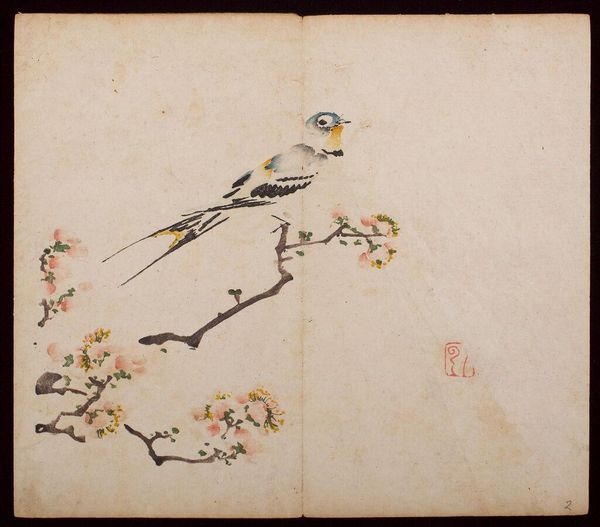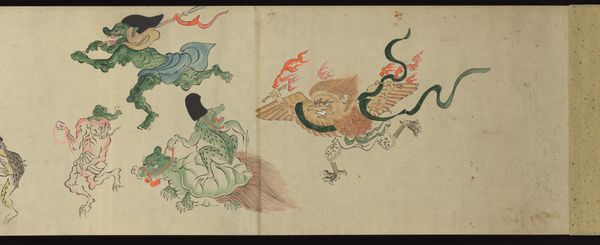
drawing, paper, watercolor
#
drawing
#
asian-art
#
bird
#
ukiyo-e
#
paper
#
personal sketchbook
#
watercolor
#
coloured pencil
#
line
Copyright: Public domain
Curator: A curious diptych by Katsushika Hokusai, featuring a sparrow on one leaf and a pair of scissors on the other. The drawing uses watercolor and colored pencil on paper. Editor: The initial impression is a delicate balance of the animate and the inanimate, rendered with stunning simplicity and refinement. The negative space emphasizes this dynamic tension between the natural and the fabricated. Curator: Absolutely. Hokusai was deeply invested in representing everyday life and the natural world. He made thousands of drawings and prints and was particularly focused on accessible art for the masses. This is very likely a page from a personal sketchbook, or practice sheets meant for mass production. Editor: Consider the lines employed. Note the soft, curving strokes depicting the bird's plumage in contrast to the sharp, precise lines that render the metal scissors. These subtle differences in line quality underscore the disparity between organic form and constructed object. Curator: I'm more interested in the question of utility, and what function is served by drawing a bird, then scissors. Does Hokusai present the bird and the scissors to imply the act of trimming or constraint imposed on the natural? Is it part of a larger pedagogical project intended for artisans in some way? The scissors almost feel symbolic of the labor involved in ukiyo-e production itself, whereas the sparrow is merely an inspirational starting point. Editor: One could say it's open to interpretation. However, by studying its form, placement, and delicate balance we arrive at understanding that goes beyond surface appearances; art doesn't require direct utility. The emotional nuance is amplified precisely because it *doesn't* show any obvious direct association or narrative. Curator: But consider the historical context: Japan undergoing rapid socio-economic change. Artists such as Hokusai had a foot in both the traditional world and this burgeoning capitalist one. These pages likely served as instruction manuals of sorts. These objects likely signify the meeting of traditional artisanal craft with modernization and industrial methods. Editor: Perhaps. But one should appreciate the artwork's own language. The very nature of the lines, shapes, and tonal variation constitutes meaning. Curator: Well, regardless of the function Hokusai intended, it's undeniable that these drawings capture a transitional period. Editor: Indeed, there's much to contemplate in how the formal and contextual dimensions interact here.
Comments
No comments
Be the first to comment and join the conversation on the ultimate creative platform.
